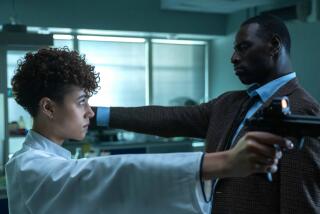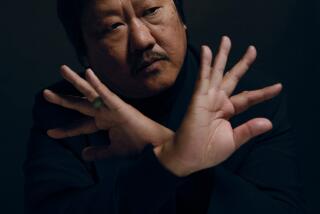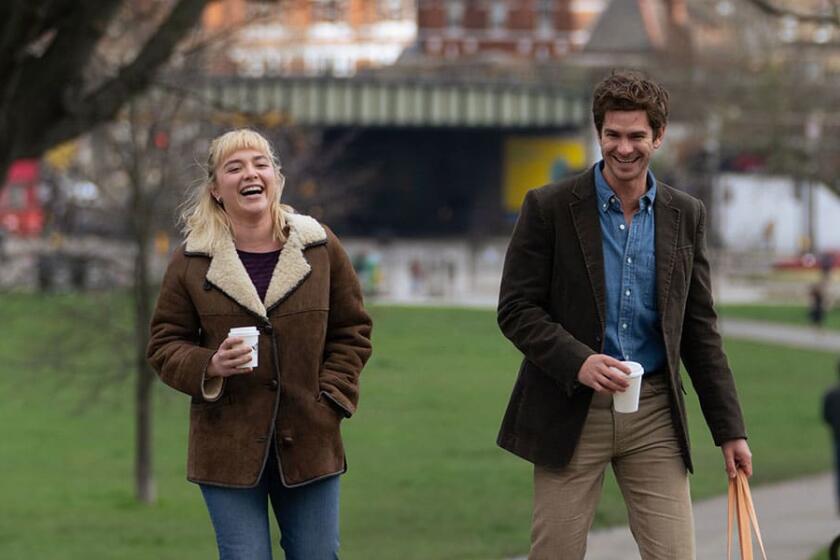‘Red Cliff’
John Woo has set himself a new challenge in “Red Cliff,” and that’s to be as old-fashioned as possible. Returning to his roots after a stint in Hollywood, Woo has made the most expensive film in mainland Chinese history, a pleasantly traditional picture that marks a new direction for one of the world’s premier action maestros.
Woo’s classic Hong Kong films with tough-guy titles like “Bullet in the Head” and “Hard-Boiled” featured intense, focused, almost balletic contemporary gangster shootouts that seemed to redefine what these kinds of movies could do.
Though it stars Woo regular Tony Leung, “Red Cliff,” by contrast, is a both throwback and change of pace, a massive historical epic that used four writers, three editors, two directors of photography, 300 horses and a cast and crew that came close to 2,000.
Filled with wall-to-wall battle scenes, “Red Cliff” feels like the kind of movie the director must have imagined when he was a child, a four-square endeavor where women are beautiful, men form manly bonds and warriors with six arrows in them walk around as if nothing happened.
It’s not just any story that Woo decided to film for his return, it’s the tale of a legendary AD 208 battle that changed the face of China and was so significant that it was turned into a classic 14th century novel called “Romance of the Three Kingdoms.”
It’s also a story that’s so well known in Asia that while the U.S. release version may sound long at 2 hours, 28 minutes, its actually streamlined compared with the two-part, five-hour edition the director released on that continent.
While all that martial action is the film’s main reason for being, before arrows start to fly and swords begin to sing we have to meet the major players, all capably acted by Hong Kong, mainland China and Taiwanese performers, with Leung, as expected, doing the most impressive work.
Villainous Gen. Cao Cao (Zhang Fengyi) is introduced as he’s browbeating the petrified Han emperor, the country’s nominal ruler. It seems there are a couple of rebellious leaders in the south, the aging veteran Liu Bei (You Yong) and the inexperienced upstart Sun Quan (Chang Chen), who need military attention.
Cao Cao wants to nip these potential insurgencies in the bud, but though the southern leaders soon combine their forces, he professes to be unconcerned. “A loser joins forces with a coward,” he snarls, “What can they accomplish?” Needless to say, he is about to find out.
For it turns out that each of these rebel leaders has a secret weapon, a trusted military advisor who is smarter than smart.
When Zhuge Liang (Takeshi Kaneshiro) visits Zhou Yu (Leung), the mighty warrior known for his modesty and his beautiful wife (top Taiwanese model Chiling Lin), it turns out the men have more in common than names that begin with Z. Both are classic Chinese music aficionados, and they seal their alliance with a 3rd century version of “It Might Get Loud.”
Because “Red Cliff” is an epic in a major key, it loses no opportunity to show its grand scale, to pull back to reveal eye-widening shots of massive troop movements. Much of the film involves efforts by the rival generals to outthink each other, to use feints and dodges, ruses and counter-ruses, to gain the advantage in the numerous military encounters that are on tap.
Finally, of course, there is a climactic battle-to-end-all-battles, featuring massed men, flotillas of boats and impressive fire effects. The planning for this sequence, we are reliably informed, took more than a year, including the on-site construction of ships that would have been too large to transport.
Individual heroics, a Woo tradition, of course play a part, and it’s nice to see the old master back in action, even if it’s with action of a decidedly different sort.
More to Read
Only good movies
Get the Indie Focus newsletter, Mark Olsen's weekly guide to the world of cinema.
You may occasionally receive promotional content from the Los Angeles Times.











